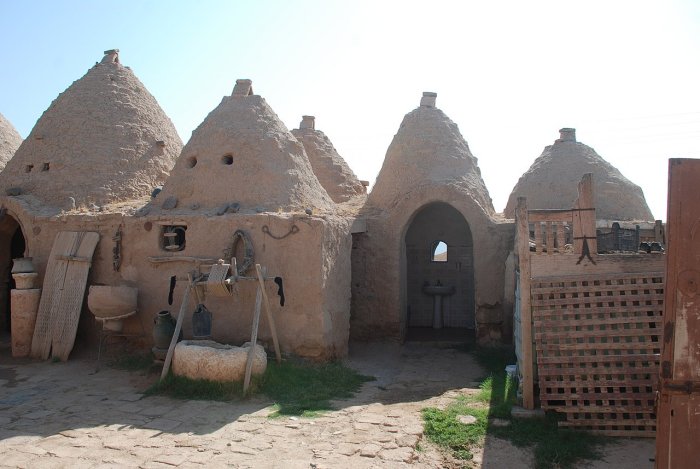Beehive’ Adobe Houses Of Ancient City Of Harran, Upper Mesopotamia
A. Sutherland - AncientPages.om - Harran was an ancient city in Upper Mesopotamia, situated at a crucial geographical crossroad between the Euphrates and Tigris rivers. It had a strategic location at the border between the ancient Mesopotamian and Anatolian cultures.
En Sarouj (Hama). Image credit: upyernoz - CC BY 2.0
The city was famous for the temple of the Moon-god Sin and the defeat of the Roman general Crassus in 53 BC ("Battle of Carrhae"). Today, Harran is famous for its traditional 'beehive' adobe buildings that were cool inside and constructed entirely without wood. Their design has not been changed for at least 3,000 years. The history of the ancient Harran's "beehive" adobe houses goes back in time. Rich is also Harran's history.
The city was founded in an area occupied by two trade routes between Syria, Asia Minor, and Mesopotamia. In this city, Abraham's father, Terah, settled down after leaving Ur. (Leviticus 11:31: the city was called Haran).
From the third millennium BC until medieval times, Harran (in Roman, Carrhae) was an important trade center located on the road from the Mediterranean Sea to the heart of Assyria. Abraham stayed there while on his voyage from Ur
Before the reign of Sennacherib (704–681 BC), the king of Assyria from 705 BC to 681 BC was mainly known for his military campaigns against Babylon and Judah; Harran rebelled against the mighty Assyrians.
Harran dome houses. Image credit: Acar54 - CC BY-SA 3.0
The Assyrians reconquered the city, as mentioned in 2 Kings 19:12 - "Did the gods of the nations that were destroyed by my predecessors deliver them—the gods of Gozan, Harran, Rezeph and the people of Eden who were in Tel Assar? Isaiah 37:12. says that it was deprived of many privileges, which were later restored. The sanctuary of Ehulhul in Harran was later restored by Assyrian rulers like Shalmaneser III ("the god Shulmanu is pre-eminent").
He ruled Assyria (859–824 BC) and was known for his constant and successful campaigns against the eastern tribes, the Babylonians, and the nations of Mesopotamia, Syria, and another prominent figure, Ashurbanipal (668-631 BC). The earliest records of Harran come from Ebla tablets (late 3rd millennium BC).
From these, it is known that an early king or mayor of Harran had married an Eblaite princess, Zugalum, who then became "queen of Harran," whose name was frequently mentioned in ancient documents. It appears that Harran remained a part of the regional Eblaite kingdom for some time.
Royal letters from the city of Mari in the middle of the Euphrates have confirmed that the area around the Balikh river remained occupied in c. the 19th century BC. A confederation of semi-nomadic tribes was especially active around the region near Harran then.
Harran is also mentioned as the provincial capital of the Assyrian empire (until the late seventh century BC). God Sin and his moon sanctuary were closely associated with Harran until the third century CE. But Sin was not the only god worshiped in this ancient city; there were others, such as the Syrian goddess Atargatis, god Sin's consort Ningal, and the Arabian goddess Allat ("Mrs. God").
Beehive homes in Harran, Turkey. Credit: Adobe Stock - Philipp Berezhnoy
Modern people mainly associate Harran with the city's dome-like structures known as “beehive houses.” Wood is rare in the Harran region because of the area's dry climate. People built their houses with materials they could find easily, like adobe, brick, and stone.
The Harran conical houses served people for a very long time. They first appeared around 3000 years ago.
The beehive homes are wonderfully cool places in the desert heat. Their thick mud brick (adobe) walls effectively trap the cool and, at the same time, keep the sun out. Beehive homes have few windows.
The high domes collect the hot air, moving it away from the ground floor, keeping the interior around 75°F (24°C) while outside extremes range from 95°F (35°C) to 32°F (0°C). Each dome is built from approximately 1,400 adobe bricks. The nomadic lifestyle and the climatic conditions forced people to adopt a building form that could be constructed easily, like a tent, but perfectly resists heat and cold.
The roofs have a high heat capacity (the ability to store heat) to absorb the sun's rays during the day and slowly release it to the interior during the cool night. The roof slopes steeply to shed the occasional but heavy rains.
Julian Huxley, the traveler and author, described beehive homes as built of "unburnt mud or clay, with the floor slightly raised above the soil outside, spotlessly clean, with a recess for cooking and attractive decorations in bright tinsel paper on the walls. Though only a few yards in diameter, its high conical roof gave it a sense of space".
The beehive homes survived for thousands of years. They constitute a genius design of ancient people who knew how to build to resist the stresses of strong winds and withstand earthquakes, strong wind, storms, and heavy seasonal rains. It is the reason why these buildings are still in use today.
Written by – A. Sutherland - AncientPages.com Senior Staff Writer
Updated on February 4, 2024
Copyright © AncientPages.com All rights reserved. This material may not be published, broadcast, rewritten or redistributed in whole or part without the express written permission of AncientPages.com
Expand for referencesReferences:
W.F. Albright, Institute of Archaeological Research in Jerusalem. Symbiosis, Symbolism, and the Power of the Past
http://naturalhomes.org/
Lipschitz O. The Fall and Rise of Jerusalem
More From Ancient Pages
-
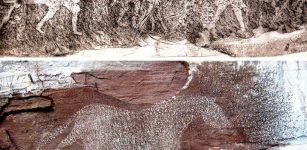 Sunduki – ‘Home Of The Gods’ – One Of The World’s Oldest Astronomical Observatories
Civilizations | Oct 4, 2015
Sunduki – ‘Home Of The Gods’ – One Of The World’s Oldest Astronomical Observatories
Civilizations | Oct 4, 2015 -
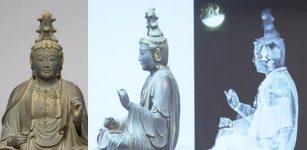 Mysterious Scrolls And Artifacts Discovered Inside Ancient Buddha Statuette
Archaeology | May 9, 2018
Mysterious Scrolls And Artifacts Discovered Inside Ancient Buddha Statuette
Archaeology | May 9, 2018 -
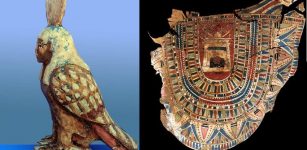 Graeco-Roman Era Rock-Cut Tomb Unearthed In Aswan West Bank, Upper Egypt
Archaeology | Apr 24, 2019
Graeco-Roman Era Rock-Cut Tomb Unearthed In Aswan West Bank, Upper Egypt
Archaeology | Apr 24, 2019 -
 World Map Of Neanderthal And Denisovan DNA In Modern Humans
DNA | Apr 13, 2023
World Map Of Neanderthal And Denisovan DNA In Modern Humans
DNA | Apr 13, 2023 -
 Ancient Secrets Of Karelia: Mysterious Vottovaara Mountain Was Sacred To The Sami People
Featured Stories | Apr 5, 2017
Ancient Secrets Of Karelia: Mysterious Vottovaara Mountain Was Sacred To The Sami People
Featured Stories | Apr 5, 2017 -
 Bonobos And Chimps: What Our Closest Relatives Tell Us About Humans
Featured Stories | Apr 6, 2023
Bonobos And Chimps: What Our Closest Relatives Tell Us About Humans
Featured Stories | Apr 6, 2023 -
 Aboriginal Art And Knowledge Unlocks Mystery Of Fairy Circles
Archaeology | Apr 5, 2023
Aboriginal Art And Knowledge Unlocks Mystery Of Fairy Circles
Archaeology | Apr 5, 2023 -
 Evidence Of Babylonian Destruction Of Jerusalem Found At The City of David
Archaeology | Aug 19, 2017
Evidence Of Babylonian Destruction Of Jerusalem Found At The City of David
Archaeology | Aug 19, 2017 -
 Puzzling Case Of An Ancient French Giant Whose Bones Caused Sensation And Controversy
Ancient Mysteries | Jan 22, 2019
Puzzling Case Of An Ancient French Giant Whose Bones Caused Sensation And Controversy
Ancient Mysteries | Jan 22, 2019 -
 Time Capsule – Best Preserved 3,000-Year-Old Dwelling Ever Found In Britain
Archaeology | Jan 12, 2016
Time Capsule – Best Preserved 3,000-Year-Old Dwelling Ever Found In Britain
Archaeology | Jan 12, 2016 -
 Ancient Mystery Of The Oghars – An Unusual And Little-Known Lost Race
Ancient Mysteries | Mar 19, 2019
Ancient Mystery Of The Oghars – An Unusual And Little-Known Lost Race
Ancient Mysteries | Mar 19, 2019 -
 World’s Oldest Mercury Poisoning Revealed In Copper Age Iberia
Archaeology | Nov 16, 2021
World’s Oldest Mercury Poisoning Revealed In Copper Age Iberia
Archaeology | Nov 16, 2021 -
 Atlit Yam – Fate Of The 9,000-Year-Old Underwater Megalithic Site With A Huge Stone Circle
Featured Stories | Jun 14, 2021
Atlit Yam – Fate Of The 9,000-Year-Old Underwater Megalithic Site With A Huge Stone Circle
Featured Stories | Jun 14, 2021 -
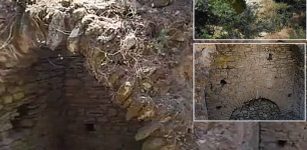 Colosseum-Like Structure Unearthed In 2700-Year-Old Ancient City Of Mastaura
Archaeology | Aug 22, 2020
Colosseum-Like Structure Unearthed In 2700-Year-Old Ancient City Of Mastaura
Archaeology | Aug 22, 2020 -
 Never-Ending Battles Between God Ra And Indestructible Apophis In Ancient Egyptian Beliefs
Egyptian Mythology | May 20, 2021
Never-Ending Battles Between God Ra And Indestructible Apophis In Ancient Egyptian Beliefs
Egyptian Mythology | May 20, 2021 -
 Ancient Secrets Of Megaliths And Anti-Gravity Revealed – Examination Of An Unknown Property Of Static Electricity
Ancient Technology | Feb 17, 2020
Ancient Secrets Of Megaliths And Anti-Gravity Revealed – Examination Of An Unknown Property Of Static Electricity
Ancient Technology | Feb 17, 2020 -
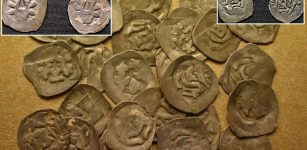 A Hoard Of Silver Coins Found Accidentally Under An Uprooted Tree Near Pieštany, Slovakia
Artifacts | Oct 28, 2020
A Hoard Of Silver Coins Found Accidentally Under An Uprooted Tree Near Pieštany, Slovakia
Artifacts | Oct 28, 2020 -
 Mysterious 210,000-Year-Old Apidima Skull Could Re-Write Human History
Archaeology | Jul 11, 2019
Mysterious 210,000-Year-Old Apidima Skull Could Re-Write Human History
Archaeology | Jul 11, 2019 -
 Great Sumerian God Enki: Creator, Protector Of Humanity, Brilliant Scientist And Patron Of Craftsmen And Artisans
Featured Stories | May 9, 2017
Great Sumerian God Enki: Creator, Protector Of Humanity, Brilliant Scientist And Patron Of Craftsmen And Artisans
Featured Stories | May 9, 2017 -
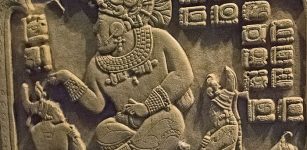 Fall Of The Ancient Maya Civilization Not Caused By Climate Change And Environmental Degradation – Scientists Say
Archaeology | Nov 18, 2021
Fall Of The Ancient Maya Civilization Not Caused By Climate Change And Environmental Degradation – Scientists Say
Archaeology | Nov 18, 2021


